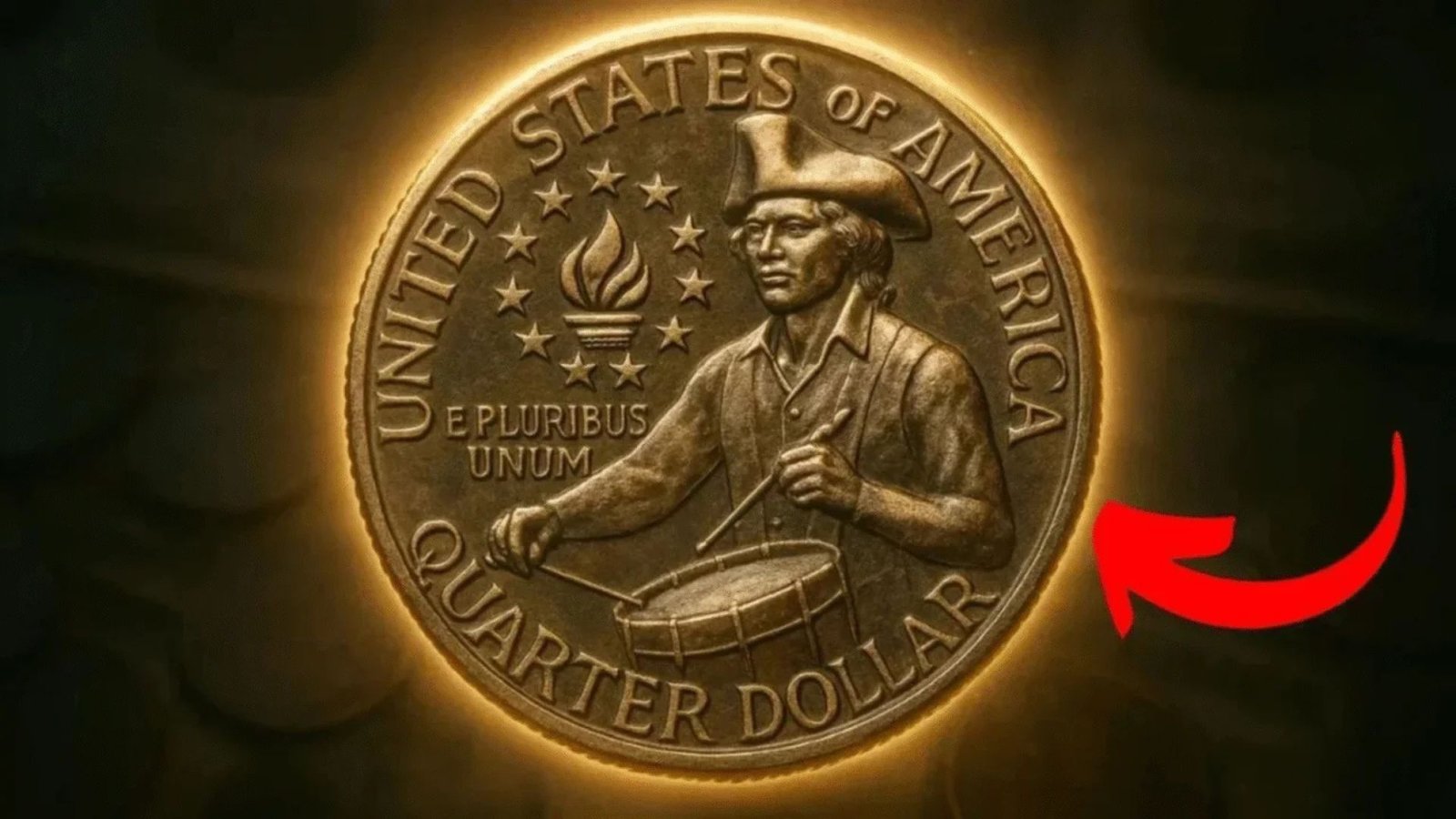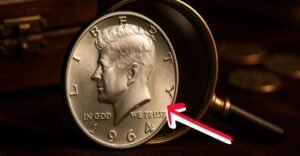The 1976 Bicentennial Quarter has captured the attention of coin collectors and history buffs alike, with one rare version recently sold for a staggering $1.4 million at auction. This iconic coin, minted to celebrate America’s 200th birthday, is more than just pocket change—it’s a piece of history that could be hiding in your coin jar.
we’ll explore what makes this quarter so special, why it fetched such a high price, and how you can spot a potentially valuable 1976 Bicentennial Quarter in your own collection.
What Is the 1976 Bicentennial Quarter?
The 1976 Bicentennial Quarter was created by the U.S. Mint to mark the 200th anniversary of American independence. Unlike regular quarters, this coin features a unique design with a colonial drummer on the back and a dual date (1776-1976) on the front. Over 1.6 billion of these quarters were produced, making them common in everyday transactions. However, a select few stand out due to rare features, turning them into collector’s treasures.
Why Is This Quarter So Valuable?
While most 1976 Bicentennial Quarters are worth only their face value (25 cents), certain varieties have unique traits that make them highly sought after. The quarter that sold for $1.4 million was likely a rare error coin or one struck in a special metal, such as silver, with exceptional condition. These factors drive up the value significantly among collectors.
Key Features of the 1976 Bicentennial Quarter
To understand why some 1976 Bicentennial Quarters are worth millions, let’s break down their key characteristics:
| Feature | Description |
|---|---|
| Design | Colonial drummer on the reverse, dual date (1776-1976) on the obverse. |
| Material | Most are copper-nickel, but some were minted in 40% silver for collectors. |
| Mint Marks | “D” (Denver), “S” (San Francisco), or no mark (Philadelphia). |
| Condition | Coins in pristine, uncirculated condition fetch higher prices. |
| Errors | Rare minting errors, like double strikes or misaligned designs, increase value. |
Types of 1976 Bicentennial Quarters
Not all 1976 Bicentennial Quarters are created equal. Here are the main types you might encounter:
1. Copper-Nickel Clad Quarters
These are the most common, used in everyday transactions. They were minted in Philadelphia (no mint mark) and Denver (“D” mint mark). While they’re usually worth 25 cents, those in excellent condition can fetch a small premium.
2. 40% Silver Quarters
Minted in San Francisco (“S” mint mark), these were made for collectors and included in special sets. They contain 40% silver, making them more valuable than their copper-nickel counterparts, especially in uncirculated condition.
3. Error Coins
Some 1976 Bicentennial Quarters have minting errors, such as:
- Double Die Errors: The design appears doubled due to a minting mistake.
- Off-Center Strikes: The design is misaligned, creating a unique look.
- Missing Letters or Numbers: Incomplete inscriptions can make a coin rare.
These errors are what often drive values into the thousands or even millions.
Why Did This Quarter Sell for $1.4 Million?
The 1976 Bicentennial Quarter that sold for $1.4 million was likely a combination of rarity, condition, and historical significance. Here are some reasons why it commanded such a high price:
1. Rare Minting Errors
Coins with unique errors, like a double die or off-center strike, are incredibly rare. Collectors pay top dollar for these one-of-a-kind pieces.
2. Pristine Condition
Coins graded in “Mint State” (MS) condition, especially MS-70 (perfect condition), are highly desirable. The $1.4 million quarter was likely in near-perfect condition, with no scratches or wear.
3. Silver Content
If the quarter was part of the 40% silver series, its material alone adds intrinsic value. Silver prices fluctuate, but collector demand for these coins far exceeds their metal worth.
4. Auction Hype
High-profile auctions can drive up prices as collectors compete for rare finds. The $1.4 million sale likely attracted wealthy bidders eager to own a piece of numismatic history.
How to Spot a Valuable 1976 Bicentennial Quarter
You might be wondering if you have a million-dollar 1976 Bicentennial Quarter in your pocket. Here’s how to check:
Step 1: Look for the Mint Mark
- No Mint Mark: Philadelphia-minted, usually common.
- “D” Mint Mark: Denver-minted, also common but check for errors.
- “S” Mint Mark: San Francisco-minted, likely silver and more valuable.
Step 2: Check for Errors
Examine the coin for unusual features:
- Blurry or doubled text/design.
- Misaligned or off-center images.
- Missing or incomplete inscriptions.
Step 3: Assess Condition
Use a magnifying glass to check for wear. Coins with sharp details and no scratches are more likely to be valuable.
Step 4: Get It Appraised
If you suspect your 1976 Bicentennial Quarter is special, take it to a professional coin grader or dealer. Services like PCGS (Professional Coin Grading Service) or NGC (Numismatic Guaranty Corporation) can certify its authenticity and value.
Tips for Collecting 1976 Bicentennial Quarters
If you’re inspired to start collecting, here are some tips to get started:
- Learn the Basics: Research coin grading and minting processes to understand what makes a coin valuable.
- Buy from Reputable Dealers: Purchase from trusted sources to avoid fakes.
- Store Properly: Keep coins in protective holders to maintain their condition.
- Join Collector Communities: Forums and clubs can provide valuable insights and trading opportunities.
- Stay Updated: Follow auction news to spot trends in coin values.
The History Behind the 1976 Bicentennial Quarter
The 1976 Bicentennial Quarter was part of a larger effort by the U.S. Mint to celebrate America’s bicentennial. The coin’s reverse, designed by Jack L. Ahr, features a colonial drummer, symbolizing the American Revolution. The obverse retains the familiar portrait of George Washington but includes the dual date 1776-1976. This coin was minted alongside bicentennial half-dollars and dollars, making it part of a historic trio.
Why Collectors Love It
The 1976 Bicentennial Quarter holds a special place in collectors’ hearts because:
- It commemorates a major milestone in U.S. history.
- Its unique design stands out from standard quarters.
- Rare varieties and errors make it a treasure hunt for enthusiasts.
Could You Have a Million-Dollar Quarter?
The $1.4 million sale of a 1976 Bicentennial Quarter proves that hidden treasures are out there. While it’s unlikely you’ll find one in your change, it’s worth checking your coin collection, attic, or old piggy bank. Even if you don’t strike gold, collecting these quarters can be a fun and rewarding hobby.
Where to Start
- Check Your Change: Look through your coins for the 1776-1976 date.
- Visit Coin Shows: Local events are great for learning and trading.
- Online Marketplaces: Sites like eBay or Heritage Auctions list 1976 Bicentennial Quarters, but beware of scams.
Conclusion
The 1976 Bicentennial Quarter is more than just a coin—it’s a piece of American history with the potential for incredible value. Whether you’re a seasoned collector or just curious, the story of the $1.4 million quarter is a reminder that treasures can hide in plain sight. Start examining your coins today, and who knows? You might uncover the next million-dollar 1976 Bicentennial Quarter!




